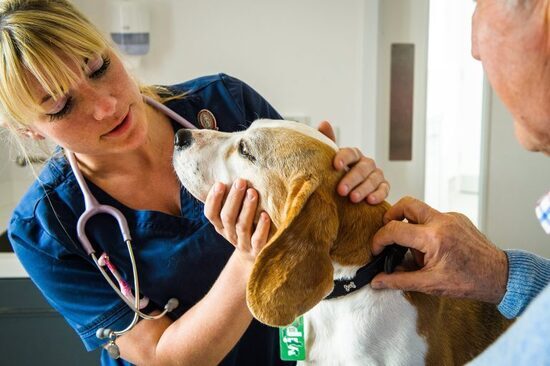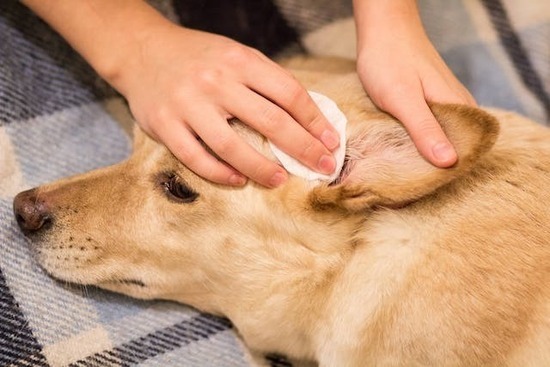ADVERTISEMENT

ADVERTISEMENT
A swollen ear flap in your beloved canine companion can be a cause for concern. While it’s essential to consult with a veterinarian for proper diagnosis and treatment, there are some steps you can take to provide initial care and comfort to your dog. In this article, we’ll discuss how to treat your dog’s swollen ear flap at home, emphasizing the importance of veterinary guidance throughout the process.
Examine the Ear Carefully:
The first step in treating your dog’s swollen ear flap is to conduct a thorough examination. Gently inspect the ear flap and surrounding areas for any signs of injury, redness, discharge, or foreign objects. If you discover a foreign object or suspect an injury, refrain from attempting to remove it yourself, as this could worsen the situation. Instead, seek immediate veterinary assistance.
Clean the Ear Gently:
If the ear flap does not exhibit visible signs of injury or irritation, you can proceed to clean it gently. Use a clean, damp cloth to wipe away any dirt or debris. It’s essential to be cautious during this process to avoid pushing any foreign material further into the ear canal. Use lukewarm water or a saline solution for cleaning, and avoid using harsh chemicals or alcohol.

Topical Treatment:
Your veterinarian may recommend a topical treatment for your dog’s swollen ear flap. This could include an antibiotic ointment or a hydrocortisone cream. Follow your vet’s instructions carefully when applying these treatments. Never use over-the-counter medications without consulting your veterinarian, as some can be harmful to dogs.
Pain Management:
If your dog appears to be in pain or discomfort, discuss pain management options with your veterinarian. They can recommend appropriate pain relief medications or therapies. Avoid giving your dog human pain medications, as they can be toxic to dogs.
Rest and Isolation:
ADVERTISEMENT
Encourage your dog to rest and avoid activities that may exacerbate the swelling. Rest is crucial for the healing process. Additionally, try to prevent your dog from scratching or shaking their head, as this can worsen the condition and potentially lead to further injury.
Monitor for Changes:
Keep a close watch on the swelling and your dog’s overall condition. If the swelling does not improve within a day or if it worsens, or if your dog exhibits other concerning symptoms such as fever, loss of appetite, or changes in behavior, contact your veterinarian immediately. Timely communication with your vet is essential for a proper diagnosis and treatment plan.

Prevent Further Irritation:
If your dog’s swollen ear flap is related to allergies, food sensitivities, or ear infections, follow your veterinarian’s recommendations for managing these underlying conditions. Prevention is key to reducing the likelihood of future flare-ups.
Keep the Ear Dry:
Moisture can exacerbate ear problems, so make an effort to keep the affected ear dry, especially after cleaning. Avoid exposing your dog’s ear to excessive moisture, and ensure the ear is well-dried after baths or swimming.
Caring for your dog’s swollen ear flap at home involves a combination of gentle cleaning, topical treatment as recommended by your veterinarian, pain management, rest, and vigilant monitoring for any changes in your dog’s condition. While these home care tips can provide initial relief, it is crucial to remember that they are not a substitute for professional veterinary care.
ADVERTISEMENT
A swollen ear flap can be caused by a variety of underlying issues, including infections, allergies, trauma, or more severe conditions. A veterinarian can accurately diagnose the problem and provide a tailored treatment plan. Always consult with your vet to ensure your dog receives the best care and treatment for their specific condition, ultimately leading to a quicker and more comfortable recovery.